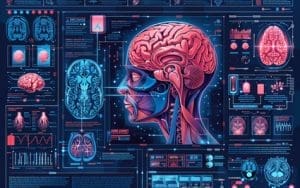We all have “a way” about us. You know, our disposition – our emotional and behavioral reactions to what’s going on around us. That’s temperament and we’re going to talk about it. By the way, have you ever wondered what your type is?
Eysenck likened panic attacks to the ear-bursting feedback screech produced when a microphone gets too close to a speaker.
In the world of psychology, the diathesis-stress model offers a foundational explanation for why we’re saddled with emotional and mental illnesses.
Simply, it’s the collision of predispositional vulnerabilities (diatheses) and stress from life experiences. Temperament is one of those diatheses.
Heads-up
As you may image, it takes a lot of information to present a quality review of temperament. That means we’ll run with two parts.
Here we’ll discuss what temperament is and its dimensions. And we’ll come back in part two and hit goodies, such as how it’s formed, its relationship with personality, change potential – and the types of temperament.
Let’s get after it…
What is temperament?
Let’s get things rolling with the American Psychological Association’s definition of temperament…
The basic foundation of personality, usually assumed to be biologically determined and present early in life, including such characteristics as energy level, emotional responsiveness, demeanor, mood, response tempo, behavioral inhibition, and willingness to explore.
So we’re very much in the realm of the innate. That said, can we refer to temperament as our “natural self?”
Interesting: the word “temperament” comes from Latin – “temperare“, “to mix”. The “mixing” involved the complementary characteristics to form the ideal personality – in A.D. 200.
The dimensions of temperament
Hans Eysenck
Temperament was of great interest to Hans Eysenck (1916-1997). As a research psychologist, he used mathematics and science to conclude that temperament is genetically-based and physiologically-supported.
In his initial work, Eysenck submitted that there are two dimensions of temperament: neuroticism and extraversion-introversion.
Let’s dive in……
Neuroticism
According to Eysenck, those with a neuroticistic temperament may be “normal,” fairly calm and collected people. However, they may also lean toward nervousness. And, of course, the nervous sorts more frequently endure “nervous disorders” – neuroses.
I’m neuroticistic.
Sympathetic nervous system
To fully understand neuroticism, Eysenck first turned to the sympathetic nervous system (SNS) – home of our fight/flight response.
He realized there are assorted levels of alarm, most notably being terrified by even minor incidents. Eysenck believed those individuals had issues of “sympathetic hyperactivity,” which makes them prime candidates for a variety of neurotic disorders.
Speaking of which…
Panic attacks
Eysenck likened panic attacks to the ear-bursting feedback screech produced when a microphone gets too close to a speaker.
As it happens, the small sounds entering the microphone get amplified and come out of the speaker. And the dynamics build and cycle until finally you get the screech.
Eysenck believed it was the same for panic attacks. So let’s say something moderately frightens us. That amps up our SNS, which makes us even more jittery. As a result, we become more sensitive to stimulation, which fosters even more anxiety and distress.
Funny, isn’t it. We end up responding more to the panic crescendo than the original fear trigger. Actually, in its simplicity, it’s hopeful.
Extraverison-introversion
Eysenck submitted that extraversion-introversion is really about how our brains balance inhibition – calming itself down, relaxing and going to sleep, or protecting itself in the face of overwhelming stimulation – and excitation – waking itself up and getting into an alert and learning mode.
Extravert
Eysenck observed that someone who’s extraverted tends to have good to strong inhibition. So when an extravert experiences a traumatic event, their brain inhibits itself, becoming “numb,” if you will, to the event.
As a result, they may have very little recall of what occurred. And since they don’t seem to feel the full mental impact of what happened, they often cruise along as though, indeed, nothing happened.
Introvert
The introvert, according to Eysenck, has poor or weak inhibition. When the trauma occurs, their brains don’t come to their rescue fast enough because they don’t shutdown.
Actually, they remain highly alert and learn well, remembering every detail of what happened. Bottom-line: they’re highly affected by the trauma and will likely avoid similar circumstances for a time, if not forever.
Neuroticism and extraversion-introversion

It’s stunning what three pounds of fat, water, protein, carbohydrates, and salt can do.
Being the curious research hound he was, Eysenck had to examine the interaction of neuroticism and extraversion-introversion, and how it generates assorted psychological problems.
One of his findings was people with phobias and obsessive-compulsive disorder tend to be quite introverted. Those with, say, conversion or dissociative disorders are more extraverted.
Why?
Response
Eysenck submitted that highly neuroticistic people over-respond to fearful stimuli. Now, if they’re introverts, they’ll quickly and thoroughly learn to avoid panic-generating situations – even to the point of becoming panicky when facing small symbols of those situations. The development of phobias is common.
Other introverts will learn specific behaviors that hold-off their panic, such as multiple checking of things or repetitively washing their hands.
The neuroticistic extraverts become good at ignoring and forgetting things that overwhelm them. They engage in classic defense mechanisms, such as denial and repression.
So, for instance, they can conveniently forget a romance gone bad (dissociation) or, to the extreme, forget that they have the ability to feel and use their legs (conversion).
Psychoticism
Over a period of time, Eysenck realized his dimensions of temperament didn’t address all populations. So off he went to the mental institutions of England and developed one more – psychoticism.
Eysenck believed that people with higher psychoticism scores are more likely to engage in irresponsible or miscalculated behavior. They may also run against accepted social norms and be motivated by a need for immediate gratification – regardless of its consequences.
But there’s the positive side of psychoticism. After testing, Eysenck found that individuals with high psychoticism scores tended to possess more advanced creative abilities.
Like his other dimensions, he suggested that psychoticism is influenced by biological factors, and was correlated with levels of hormones such as testosterone.
Other characteristics of psychoticism include responsiveness to social norms being learned through reward and punishment as well as being more prone to criminal behavior.
Come on back for part two
Yes, we all have “a way” about us. And the roots of temperament run deep. I’ve always believed that learning about such things brings us closer to ourselves and the intrapersonal adjustments we need to make.
Be sure to come back for part two. You’ll find all sorts of temperament info, including its types. Coming shortly.
How ‘bout those Chipur info and inspiration articles: review all of the titles or by category below.
Hans Eysenck image: licensed under the Creative Commons Attribution-Share Alike 3.0 Unported, 2.5 Generic, 2.0 Generic and 1.0 Generic license. No changes made. Attribution: Sirswindon at English Wikipedia

After a decades-long battle with panic, generalized anxiety, fluctuating moods, and alcohol dependence; Bill finally found his life’s passion and work – lending a hand to those in the same boat. At age 49 he hit grad school and earned his counseling credentials. And he continues his service through Chipur and other projects.




